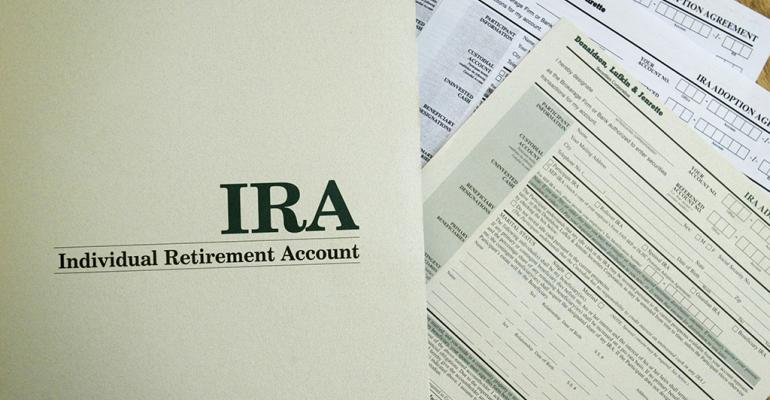For most clients, an individual retirement account is a “set it and forget it” portfolio item. Contributions to the account are usually automated, and the investments making up the IRA—typically stocks, bonds, CDs, and mutual funds—require little account holder oversight.
That’s all fine and good, but limited risk means limited returns. For clients who want to take the reins and expand their retirement accounts to include more diverse investments with the potential for higher returns, and advisors who are willing to collaborate in such a manner, a Self-Directed IRA might be the ideal choice.
What Is a Self-Directed IRA?
With regard to legal status and tax advantages, a self-directed IRA is no different from a traditional IRA. The account owner opens the IRA with the help of a custodian (usually a bank, broker or licensed financial planner) and thereafter makes regular contributions to the account, subject to annual limits and other IRS rules.
However, whereas standard IRAs typically allow only a limited array of investments, self-directed IRAs give the account holder broad leeway to choose diverse and even unconventional investments. Bear in mind, though, that the custodian of any IRA maintains control of the account and has the aut thority to veto any proposed investment. This is where, despite the “self-directed” moniker, a savvy advisor can still add value, provided they share the investor’s values and vision.
What Are the Benefits of a Self-Directed IRA?
Two words: control and flexibility. Many clients bring specific market or subject matter knowledge to the table that often goes unleveraged in traditional vehicles. For example, someone with a deep knowledge of the regional real estate market or a keen eye for small businesses with extraordinary growth potential cannot act on that knowledge within the confines of a traditional IRA. Holders of self- directed IRAs, on the other hand, can research investment opportunities and formulate portfolio strategies based on their own expertise and risk tolerance. The account holder thus has the power to cast a wider net over riskier waters, ideally combining their personal expertise with that of their advisors to haul in far bigger fish.
Examples of Investment Types
The list of allowed investment types in a self-directed IRA is not infinite (life insurance and collectibles are excluded, for example), but it stretches well beyond the horizon of the average investor’s imagination. Savvy investors have realized impressive returns with such varied investments as:
- Gold and silver
- Business ventures and private placements
- Debt/loans/promissory notes
- Commercial real estate and residential rental property
- Tax lien certificates
- Cryptocurrencies
To name just a few.
Follow The Rules
It’s important for advisors to remember that the tax-advantaged status of an IRA stems from the idea that the account will benefit its holder only in retirement, not in the present day. Therefore, all investments must be structured so that returns enrich the IRA, staying beyond the account holder’s reach. Visualize an arm’s-length relationship in which the IRA owns the investments and exists as a separate entity from the account holder.
What Are Prohibited “Self-Dealing” Transactions and “Disqualified” Persons? Like all tax-advantaged investments, self-directed IRAs are subject to pages and pages of rules by the Internal Revenue Service. The strongest prohibition of all is “self-dealing,” which immediately nullifies an account’s status as an IRA. In simplest terms, the account owner cannot enter into deals using their IRA. Prohibited transactions include selling one’s own property to the IRA, borrowing funds from it, receiving services from it, or performing services for it.
For example, if the owner of a self-directed IRA instructs the custodian to invest in a golf course, the account holder cannot receive discounted greens fees or free lessons from the club. Nor can they volunteer to drive the ball picker on the driving range to save the golf course money (even though most of us would happily volunteer to do that just for kicks). These prohibitions also apply to “disqualified persons,” including the account holder’s spouse, parents, children, and grandchildren. Interestingly, deals with siblings, aunts, and uncles are allowed.
A single act of self-dealing disqualifies the entire IRA, even if the transgression applied to one small holding making up a tiny fraction of the investment portfolio. That could mean 10 or even hundreds of thousands of dollars suddenly becoming subject to taxes, interest and penalties. Since self-directed IRA’s offer the client a broader array of options, advisors need to be particularly vigilant in detecting and avoiding these pitfalls.
Opening a self-directed IRA is a serious undertaking. Managed intelligently, the account will yield retirement savings growth that traditional IRAs can’t match. Approached carelessly, a self-directed IRA will become far more trouble than it’s worth. Somewhat counterintuitively, this vehicle can benefit greatly from a strong collaborative relationship between client and advisor. To paraphrase the great Casey Kasem, self-directed IRAs enable those who wish to grow their retirement wealth to reach for the stars, but keep their feet firmly on the ground.
Harvey Bezozi is a CPA and CFP ®. More information can be found at YourFinancialWizard.com.





